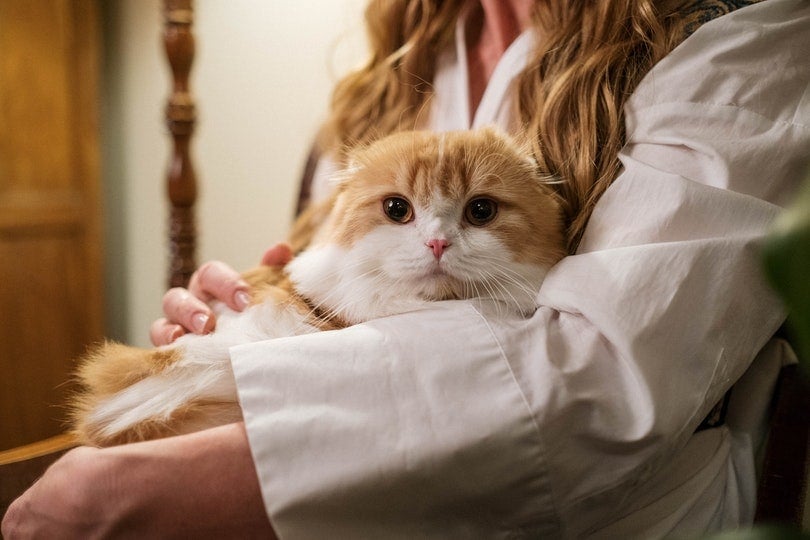
Curiosity and cats are like baseball and apple pie or peas and carrots. They just go together! In fact, it seems that when you want your kitty to ignore something, they focus on it even more, to the point of obsession. That behavior is likely to occur if you bring a baby into the home. Your pet will likely want to investigate the little one.
However, your cat could harm your child if either is startled by the other’s presence. You also probably don’t want cat hair in your baby’s bed. We know that felines are persistent, so you may find that you must use one or more methods to redirect your pet’s behavior. Fortunately, there are several things that you can do to deter your cat and keep them out of the baby’s crib.
The 8 Tips for Keeping Cats Out of a Baby’s Crib
1. Keep the Door Shut
The simplest solution is simply to keep the door to the nursery closed. But while effective, it can stoke the fires of curiosity even more. Besides, you presumably don’t want to keep it shut all the time. We suggest holding it as your last resort if something else doesn’t do the trick.
2. Install a Screen Door
An excellent compromise is to install a screen door. You can keep the room open and your cat out without a lot of fuss. The only problem that we can foresee is your kitty’s response to it. A vocal and determined pet can cause quite a ruckus. That’ll make nap times and sleep a problem with a persistent animal.

3. Train Your Cat to Stay Away
The other option is to train your pet that the nursery is off-limits. One method you can try is to use a clicker to keep your cat away from the room. If they approach the crib, calling your kitty with a click followed by a treat can work wonders. The best thing is that you can use the device to modify other unwanted behaviors.
4. Make the Crib Less Cat Friendly
One technique that anyone who has had a pest problem knows is that making a place less hospitable can get things under control quickly. In this situation, your goal is to make it less cat friendly. That could mean double-sided tape on areas where your kitty might go. You can also try using furniture protectors on chairs and sofas your pet may scratch to mark their territory.

5. Place a Sensor in the Room
Sometimes, a more direct approach is necessary. That’s where using a sensor can come in handy. They work on the element of surprise. We prefer products that use noise to create a negative association between the sound and entering the room. The best thing about this method is that you’ll likely find that it only takes a few times before your cat gets the message.
6. Don’t Make It Easy
Cats evolved with the ability to jump. It was critical to hunting to bounce down on their prey. It was also necessary to evade predators. Your kitty can jump up to 5 feet high! It’s also dependent on how much energy they can work up to get to point B. That means moving furniture in the room to make it less easy for your cat to get into the crib. Without a launching pad, your pet won’t be able to hop in the bed.

7. Distract Your Cat
An alternative method is to focus your cat’s attention elsewhere, away from the baby’s crib. Interactive toys are an excellent way to engage your pet. It’s even better if they must work at getting the reward. Your cat will soon forget all about the nursery.
8. Make Sure Your Kitty Is Getting Enough Attention
It’s no surprise that cats get attached to their owners. That’s the result of all those years of domestication. If your pet is curious about the baby’s crib, it may be that your kitty is simply jealous of someone else vying for your affection. It occurs with other pets too. To your cat, your child is a competitor and not a new member of the family.
That’s why it’s essential to give your kitty love to reassure them that you still love them. Cats may seem standoffish. But deep inside, they want your attention. Some extra interactive time could be all you need to do to keep the peace. A few slow blinks could do the trick.

Final Thoughts
The curiosity of cats is a double-edged sword for both them and us. However, it’s essential to remember that felines are hardwired to behave this way. Therefore, the best approach is to redirect their attention to something more appropriate, whether it’s a new toy or a treat reward. In any case, it’s also essential to make your pet feel secure. After all, the one thing that your kitty doesn’t like is change.
Featured Image Credit: Patricia Perez R, Shutterstock







